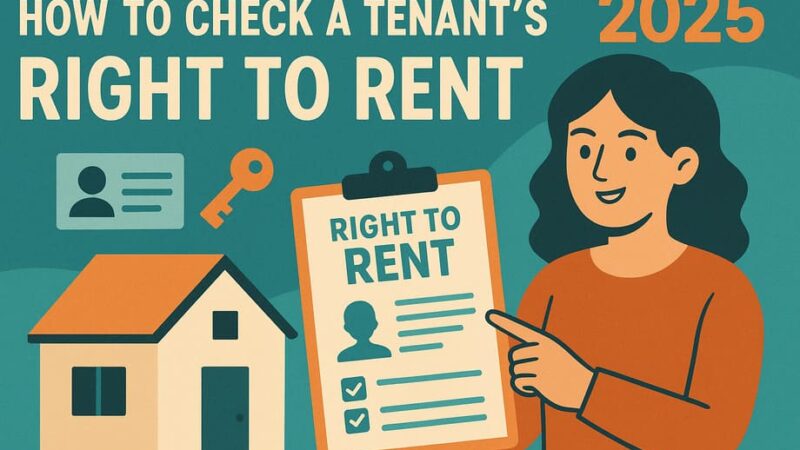HMO Furniture Guide – How to Furnish Your Property for Maximum Returns in 2025

Successfully furnishing a House in Multiple Occupation (HMO) requires strategic planning, legal compliance, and understanding your target market. This comprehensive guide provides landlords with proven strategies to maximize rental returns through intelligent furniture selection and placement.
Understanding the HMO Furnished Property Market
Why HMO Tenants Prefer Furnished Accommodation
The HMO sector operates differently from traditional single-let properties. Most HMO occupants actively seek furnished accommodation for several practical reasons:
Demographic Analysis:
- University students require temporary housing solutions without long-term furniture investments
- Early-career professionals prioritize convenience and quick move-in options
- International residents cannot transport furniture across borders
- Contract workers need flexible, ready-to-occupy spaces
Market Advantages of Furnishing:
- Rental premiums typically range from 15-25% above unfurnished equivalents
- Letting periods reduce by approximately 40-60% compared to empty properties
- Broader appeal attracts diverse tenant demographics
- Competitive positioning in saturated markets
Legal Compliance: Fire Safety Regulations
Understanding Fire Safety Standards
The Furniture and Furnishings (Fire Safety) Regulations 1988 mandate specific compliance requirements for all rental property furniture containing upholstery or foam components.
Regulated Items Include:
- All seating furniture (sofas, chairs, recliners)
- Sleeping surfaces (mattresses, bed bases, headboards)
- Soft furnishings (cushions, throws, pillows)
- Any foam-filled decorative items
Compliance Indicators:
- Visible permanent labeling confirming BS 7177 standards
- Fire-retardant filling materials that pass standardized ignition tests
- Manufacturing dates post-1950 for all upholstered pieces
Non-Compliance Consequences
Legal Penalties:
- Individual fines reaching £5,000 per non-compliant item
- Potential imprisonment up to six months
- Civil liability for tenant injuries or property damage
- Possible manslaughter charges in fatal incidents
- Insurance policy invalidation
Risk Management: Source all upholstered furniture exclusively from certified suppliers providing compliance documentation.
Room-Specific Furnishing Requirements
Individual Bedroom Specifications
Essential Components:
- Sleeping Solution: Single or compact double bed (48-54 inches wide) optimizing floor space
- Sleep Surface: Fire-compliant mattress with waterproof protection
- Storage Systems: Full-height wardrobe plus multi-drawer chest
- Personal Space: Bedside surface for essentials and lighting
- Privacy Solutions: Window treatments preventing external visibility
Productivity Enhancements:
- Workspace: Dedicated desk area with ergonomic seating
- Personal Grooming: Mirror installation (wall-mounted preferred)
- Additional Storage: Under-bed compartments or vacuum storage solutions
Professional Insight: Divan bed bases provide superior durability and integrated storage compared to traditional frames, reducing replacement frequency.
Communal Living Areas
Seating Arrangements:
- Capacity Planning: Accommodate all residents simultaneously (5-bed property requires 5+ seats)
- Central Surface: Coffee table with robust construction (avoid glass surfaces)
- Entertainment Hub: Television with appropriate stand or wall mounting
- Dining Facility: Table and seating matching occupancy levels
Tenant-Specific Considerations:
- Student Properties: Prioritize durability over aesthetics; expect intensive use
- Professional Accommodations: Emphasize quality finishes creating sophisticated environments
Kitchen Equipment Standards
Major Appliances:
- Refrigeration: Large capacity fridge-freezer serving multiple occupants
- Laundry: Washing machine (essential for most HMO categories)
- Convenience: Microwave for quick meal preparation
- Optional Upgrades: Dishwasher for professional properties (consider utility costs)
- Drying Solutions: Tumble dryer only if tenants cover utility expenses
Supplementary Items:
- Basic Appliances: Kettle, toaster for tenant convenience
- Cookware: Basic pots, pans, utensils (high replacement rate expected)
Bathroom Considerations
Storage Solutions:
- Toiletry Storage: Above-sink cabinet installation
- Bathing Facilities: Shower installation if bath-only configuration
- Practical Additions: Multiple towel rail positions
Property Maintenance Equipment
Cleaning Infrastructure:
- Vacuum System: Commercial-grade unit (budget models fail frequently)
- Floor Care: Traditional mop and bucket system
- Supply Storage: Secure location for cleaning products
- Waste Management: Individual room bins plus communal disposal
These provisions encourage tenant participation in property maintenance between professional visits.
Tenant Demographics and Furnishing Strategy
Student Accommodation Approach
Financial Considerations:
- Budget Optimization: Cost-effective solutions without compromising safety
- Durability Priority: Robust construction withstanding intensive use
- Functional Design: Practical surfaces resisting common damage
- Storage Solutions: Multiple inexpensive options for books and belongings
Typical Investment: £400-550 per bedroom for complete furnishing
Professional Property Standards
Quality Emphasis:
- Investment Approach: Higher-grade furniture justifying premium rents
- Home Working: Comprehensive desk setups with quality lighting
- Aesthetic Standards: Contemporary design with neutral color schemes
- Technology Integration: Cable management and device charging solutions
Typical Investment: £650-950 per bedroom for complete furnishing
Investment Strategy: Quality vs. Initial Cost
The True Cost of Budget Furniture
Many inexperienced landlords select lowest-price options, creating long-term financial disadvantages:
Budget Furniture Problems:
- Frequent Replacement: Poor construction requires renewal within 12-18 months
- Tenant Dissatisfaction: Quality issues create negative property reputation
- Safety Concerns: Structural failures potentially injuring occupants
- Professional Image: Cheap appearance undermines premium rent justification
Identifying Quality Construction
Construction Standards:
- Panel Thickness: Minimum 18mm melamine-faced chipboard construction
- Hardware Quality: Metal drawer runners and reinforced hinges
- Structural Integrity: Solid backing panels and reinforced joint connections
- Commercial Grade: Materials designed for intensive residential use
Investment Categories:
- Economy Range: £450-550 (basic quality, limited lifespan)
- Standard Range: £650-850 (good durability, attractive presentation)
- Premium Range: £950-1,250 (superior quality for high-end properties)
Replacement Planning
Lifecycle Management: Plan furniture replacement cycles of 3-5 years depending on usage intensity. Include replacement costs in rental yield calculations for accurate profitability assessment.
Cost-Effective Procurement Strategies
Bulk Purchase Programs
Package Benefits:
- Volume Discounts: 15-25% savings compared to individual purchases
- Design Coordination: Professional appearance throughout property
- Installation Services: Complete setup in single day
- Compliance Guarantee: All items meet fire safety requirements
Investment Examples:
- 4-Bedroom Complete: £2,400-4,200 depending on quality level
- 5-Bedroom Complete: £3,000-5,500 for comprehensive furnishing
- Communal Areas: £900-1,800 additional investment
Hybrid Sourcing Strategy
Smart Procurement:
- New Purchase Priority: Mattresses and upholstered items for compliance
- Second-Hand Opportunities: Solid construction non-upholstered pieces
- Quality Sources: Charity outlets, estate sales, landlord networks
Important: Verify fire safety compliance on all second-hand upholstered purchases.
Phased Implementation
Gradual Approach:
- Phase 1: Essential items (beds, basic storage, seating)
- Phase 2: Comfort additions (desks, decorative elements, upgrades)
- Phase 3: Long-term improvements based on tenant feedback
This strategy spreads costs while allowing market testing of tenant preferences.
Space Optimization Techniques
Compact Room Solutions
For minimum-size single occupancy rooms (approximately 7m²):
- Bed Selection: 4ft width maximizes remaining floor area
- Vertical Storage: Tall, narrow wardrobe designs utilizing ceiling height
- Wall-Mounted Solutions: Floating shelves preserving floor space
- Integrated Storage: Bed bases with built-in drawer systems
- Multi-Purpose Items: Storage ottomans providing seating and concealment
Visual Space Enhancement
Perception Management:
- Over-Door Utilization: Hanging storage without permanent fixtures
- Narrow Profiles: Slim-line furniture fitting tight spaces
- Reflective Surfaces: Strategic mirror placement creating spaciousness illusion
- Light Color Schemes: Bright, neutral tones opening visual space
Furniture Sourcing Options
Specialized HMO Suppliers
Professional Services:
- Industry Expertise: Companies specializing in rental property furnishing
- Complete Solutions: Full property packages at competitive rates
- Installation Included: Delivery, assembly, and waste removal services
- Compliance Guaranteed: All items certified for rental property use
Individual Item Procurement
Retail Advantages:
- Specific Replacements: Targeted purchases for worn items
- Seasonal Sales: Significant discounts during clearance periods
- Quality Variety: Range from budget to premium options
- Flexible Delivery: Accommodation of specific timing requirements
Second-Hand Market
Appropriate Categories:
- Solid Wood Items: Tables, wardrobes, bed frames with good structural integrity
- Metal Construction: Durable frames and storage systems
- Easy-Clean Surfaces: Non-fabric items suitable for multiple occupants
Quality Sources:
- Charity Retail: Furniture-specific charitable organizations
- Property Clearances: Estate and business closure sales
- Landlord Networks: Other property investors upgrading stock
- Auction Houses: Commercial and residential clearance events
Maintenance and Asset Management
Annual Maintenance Budget
Financial Planning: Allocate 10-12% of annual rental income for furniture maintenance, repair, and replacement. This covers:
- Normal Wear: Mattress replacement, drawer hardware, surface refinishing
- Damage Repair: Breakage, staining, and structural issues
- Improvement Investment: Upgrades enhancing tenant satisfaction
Preservation Strategies
Protective Measures:
- Mattress Protection: Waterproof, washable covers
- Upholstery Defense: Removable, launderable sofa covers
- Surface Protection: Tempered glass tops, protective mats
- Preventive Maintenance: Regular inspection preventing minor issues becoming major problems
Replacement Decision Framework
Immediate Priority:
- Safety hazards requiring urgent attention
- Fire safety compliance failures
- Structural damage affecting property presentation
Scheduled Replacement:
- Functional items showing wear but remaining safe
- Cosmetic damage not affecting safety or major function
- Outdated styling reducing property appeal
Tenant Relations and Damage Management
Responsibility Framework
Landlord Obligations:
- Common Area Damage: Regardless of individual responsibility
- Natural Deterioration: Expected wear from normal use
- Safety-Related Issues: Any problems affecting tenant wellbeing
Tenant Accountability:
- Personal Room Damage: Beyond reasonable wear expectations
- Individual Possessions: Items brought by tenants
- Deliberate Damage: Proven intentional destruction
Practical Damage Management
Administrative Approach:
- Individual Agreements: Separate contracts simplifying responsibility identification
- Joint Liability: All tenants responsible for shared area damage
- Comprehensive Inventory: Detailed documentation of initial condition
- Regular Inspection: Early identification preventing escalation
Financial Reality: Communal area damage costs are often absorbed when individual responsibility cannot be established. Include these costs in rental pricing strategies.
Property Marketing Enhancement
Photography Strategy
Presentation Optimization:
- Cleanliness Standard: Remove clutter and personal items
- Lighting Enhancement: Natural light supplemented with warm artificial lighting
- Design Coordination: Consistent color schemes and styling throughout
- Lifestyle Context: Furniture shown in realistic use scenarios
Tenant Attraction Strategy
Marketing Emphasis:
- Immediate Occupancy: Highlight move-in readiness
- Quality Standards: Reference brand names and premium features
- Practical Benefits: Emphasize storage solutions and workspace provision
- Professional Environment: Quality furnishing indicating property standards
Future-Proofing Strategies
Technology Integration
Modern Expectations:
- Device Charging: Integrated USB outlets in bedside and desk furniture
- Cable Organization: Tidy management systems for electronics
- Smart Home Preparation: Infrastructure supporting future upgrades
- Connectivity Optimization: Furniture placement supporting WiFi coverage
Sustainability Considerations
Environmental Awareness:
- Sustainable Materials: FSC-certified wood, recycled content options
- Durability Investment: Longer-lasting items reducing replacement frequency
- Local Sourcing: Reduced transportation environmental impact
- Renovation Potential: Updating existing pieces rather than replacement
Common Pitfalls and Prevention
Critical Error #1: Fire Safety Compromise
Never sacrifice fire safety compliance for cost savings. Legal and safety risks far exceed any financial benefits.
Critical Error #2: False Economy Purchasing
Avoid cheap furniture trap: Low-quality items require frequent replacement, increasing long-term costs.
Critical Error #3: Over-Provision
Limit furniture provision: Every item becomes your maintenance responsibility.
Critical Error #4: Demographic Mismatch
Match tenant needs: Student requirements differ significantly from professional expectations.
Critical Error #5: Space Planning Failures
Accurate measurement essential: Properly fitting furniture maximizes space utility.
Critical Error #6: Style Over Function
Prioritize practicality: Beautiful but impractical furniture creates tenant frustration.
Financial Analysis and Return Calculation
Initial Investment Planning
Typical Investment Ranges (5-Bedroom Property):
- Basic Standard: £3,200-4,500
- Mid-Range Quality: £4,500-6,500
- Premium Standard: £6,500-11,000+
Return on Investment Analysis
Rental Premium Calculation:
- Furnished Premium: 15-20% above unfurnished equivalent
- Example Calculation: £320 unfurnished becomes £380 furnished
- Annual Benefit: £720 additional income
- Payback Period: 4-6 years for mid-range investment
Additional Value Creation:
- Accelerated Letting: Reduced void periods
- Tenant Retention: Comfortable accommodation encouraging longer stays
- Market Positioning: Justified premium rents in competitive areas
Tax Implications
Allowable Expenses:
- Replacement Purchases: Like-for-like replacements are tax-deductible
- Maintenance Costs: Repair and upkeep expenses
- Initial Capital: May qualify for capital allowance treatment
Professional Advice: Consult qualified accountants regarding optimal tax treatment for furniture investments.
Conclusion: Strategic Furnishing for Maximum Returns
Successful HMO furnishing requires balancing safety compliance, tenant satisfaction, durability requirements, and cost management. Landlords achieving this balance create properties that tenants value highly while generating strong, sustainable investment returns.
Success Framework:
- Safety Compliance: Uncompromising commitment to fire safety standards
- Quality Investment: Durable furniture reduces long-term replacement costs
- Demographic Understanding: Furnishing matching target tenant preferences
- Replacement Planning: Annual budget allocation for maintenance and renewal
- Professional Standards: Quality presentation attracting premium tenants
Investment Summary
Well-executed HMO furnishing strategies generate rental premiums, reduce void periods, and create sustainable competitive advantages. While initial investment appears substantial, long-term benefits—increased income, tenant satisfaction, and reduced operational issues—justify quality furnishing as one of the most effective investments in HMO property development.
Strategic Principle: Furniture investment creates tenant environments worth premium rents, not merely fills empty spaces.
Implementation Guidance: Begin with multiple supplier quotations, create comprehensive budgets including replacement costs, and maintain uncompromising safety compliance standards. Quality initial investment creates long-term financial benefits and operational efficiency.
This guide provides general HMO furnishing information. Always verify local authority requirements and current safety standards for your specific location.
Last Updated on August 13, 2025 by James Cartwright







